Summary of Climate Disasters on the Planet from September 11 to September 17, 2024
Storm Boris
Storm Boris wreaked havoc for several days in the countries of Central and Eastern Europe. The residents of Austria, Poland, the Czech Republic, Romania, Slovakia, Hungary, Moldova, Ukraine, and Germany were affected by the onslaught of the storm.
In the Czech Republic, the regions of Northern and Southern Moravia were particularly hard-hit.
In the area of the Jeseník meteorological station, 463.7 mm (18.25 inches) of precipitation fell in just 4 days,
which exceeded the half-year norm.
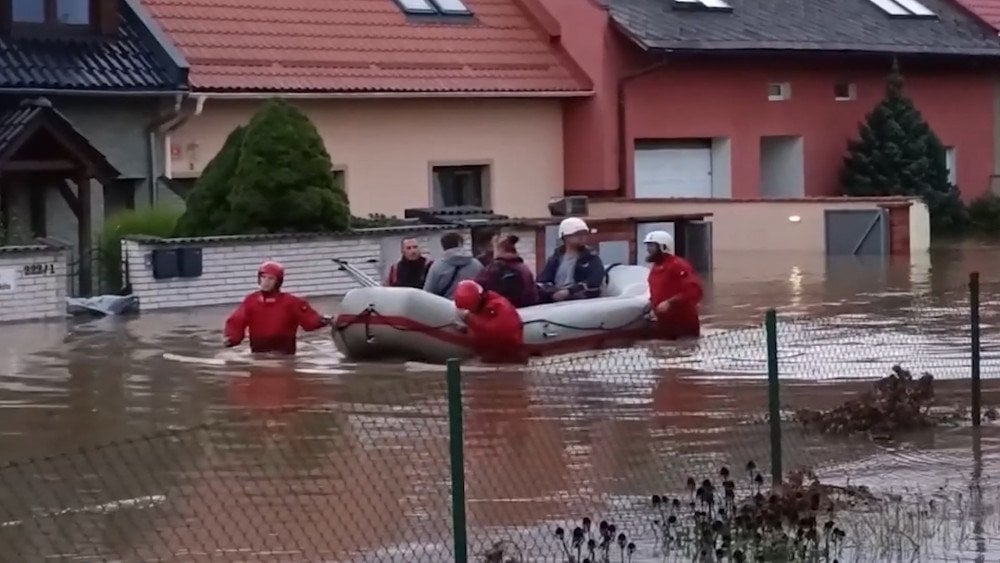
Flooded streets in the town of Litovel, Czech Republic
Cities and villages in the Jeseniky mountains were flooded and completely cut off by raging torrents, with water levels reaching 2 meters (6.56 feet) in some places. The military dispatched a helicopter to assist with evacuations. Due to the rising water level in the Morava River, around 70% of the town of Litovel was submerged.
Schools and medical facilities were closed. The town was left without communication, electricity, and transportation.
According to the mayor of Opava, where 10,000 people—one-fifth of the population—were evacuated, this disaster was worse than the historic event of 1997, known as the “flood of the century.”
Two chemical plants and a power plant that provide the city with heat and hot water had to close due to flooding in areas of Ostrava.

The Ostrava power plant was closed due to flooding
Around 260,000 homes across the country were left without power, and traffic on dozens of railway lines and roads was halted. As of September 18, the storm claimed the lives of 5 people, and 8 were reported missing.
Some areas of northeastern Austria were declared disaster zones.
Nearly 48 hours of continuous snowfall
combined with strong winds reaching speeds of up to 146 km/h (90.72 mph) created extreme conditions in the Alps.

Abnormal amount of snow fell in the Austrian Alps
In the mountains of the Tyrol region, snowdrifts reached 1 meter (3.28 feet) in some places, which is a rare occurrence for mid-September. Transportation in the region was halted.
One person went missing due to an avalanche.
In Vienna, the capital of Austria, a small river overflowed its banks and flooded the surrounding areas. The water level in the Wien River rose from 50 cm (1.64 feet) to 2.26 meters (7.41 feet) in just one day.
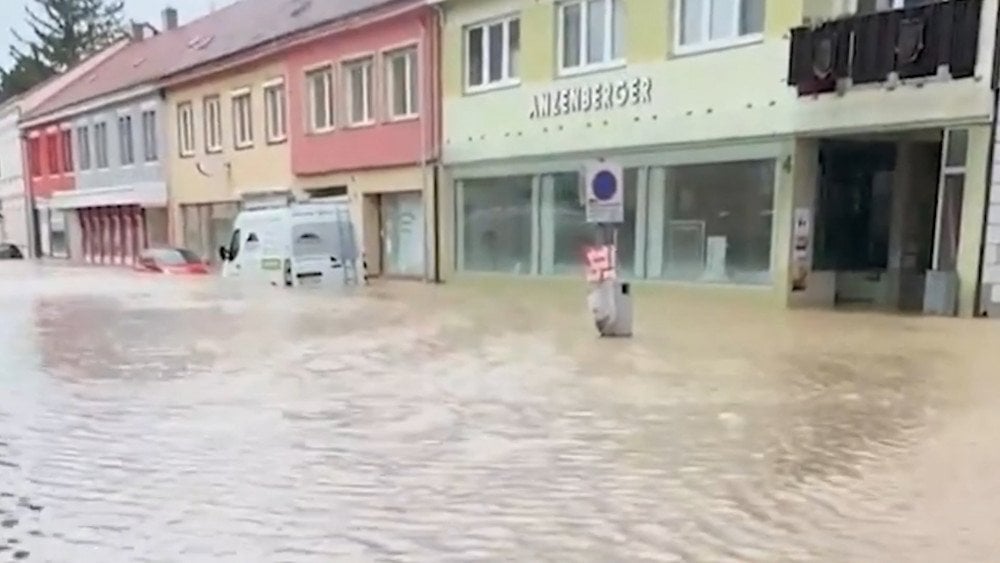
Massive rainfall submerged city streets, Austria
Four out of five metro lines in Vienna were closed. The flood caused transportation disruptions across Austria and led to numerous train cancellations. As of September 18, five people had died due to the disaster in Austria.
In addition to infrastructure, nature was also severely impacted. Thousands of swallows perished, unable to migrate to Africa for the winter. The heavy rains wiped out insects, their primary food source, and the cold accelerated their demise.
In Romania, some areas saw up to 160 mm (6.3 inches) of rainfall on September 14, leaving thousands of people in flooded zones. The counties of Galați and Vaslui were hit the hardest. As of September 18, 7 people had died in Romania.
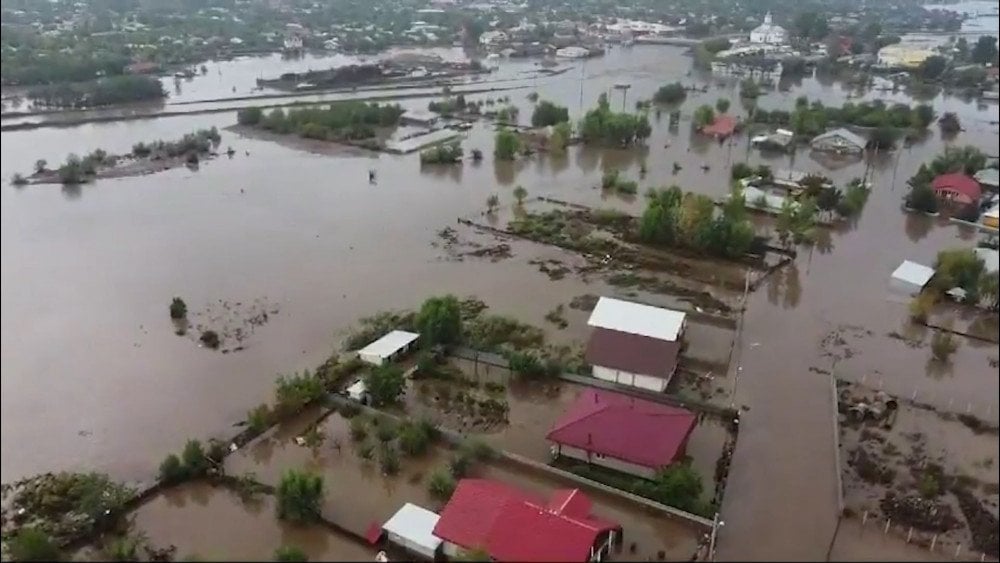
Storm Boris caused severe flooding in Romania
People were rescued by boats, and a Black Hawk helicopter was also deployed there to help with the search and rescue efforts.
The mayor of Slobozia Conachi, a village in Galați, described the flooding as a “catastrophe of epic proportions.” In Galați alone, 25,000 people were left without electricity.
In Poland, the southwestern region was the most affected. The Polish government declared a state of emergency, and the army was involved in rescue efforts.
In the town of Stronie Śląskie in Lower Silesia, a dam burst caused a bridge to collapse, flooding streets and homes.
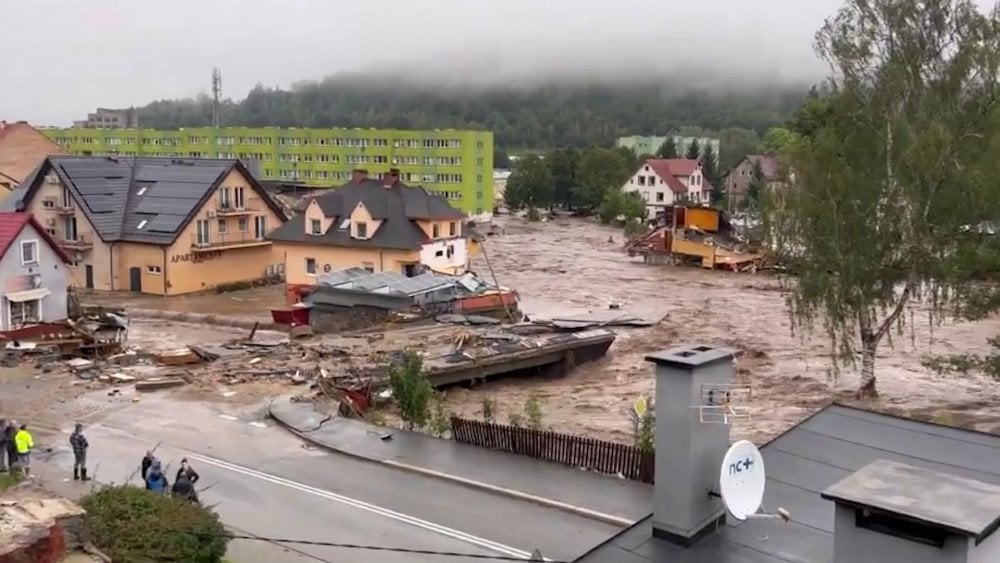
Bridge collapse due to a dam burst in the town of Stronie Śląskie
Another bridge collapsed in Głuchołazy, Opole Voivodeship. Many streets were covered in a thick layer of mud.
Soldiers assisting the local population in the town of Kłodzko were themselves trapped by the floodwaters. The mayor announced that his town had "lost the battle" against the floods, and that the situation had become “critical”.
Two dams on the Nysa Kłodzka River could not withstand the water pressure, leading to the evacuation of 44,000 residents. On September 15, a flood bank collapsed in the city of Nysa, and the next day, the Topola Dam in Nysa County’s Paczkow Town burst.
As of September 18, seven people had died in Poland due to the storm.
A combination of various weather factors created this “perfect storm,” where very cold air from the Arctic met very warm air from the Mediterranean. Meanwhile, Storm Boris got stuck between two high-pressure zones, which kept it in one location long enough to dump a massive amount of water.
According to a climatologist, “Parts of Central Europe have never recorded a weather event like this. Not just in September, but for any month.”
Typhoon Yagi
The remnants of Super Typhoon Yagi, which had weakened and dissipated almost a week ago, continued to cause catastrophic rains and flooding across Southeast Asia, including Vietnam, Thailand, Myanmar, and Laos.
In Myanmar, the capital city of Naypyidaw was among the hardest-hit areas, with more than 320,000 people forced to seek shelter as their homes were flooded.

Thousands of people were forced to leave their destroyed homes, Myanmar
In the Mandalay region, after the Samong dam burst, 20 villages were submerged, with water levels reaching 2.44 meters (8 feet).
Train services on the country’s main Yangon-Mandalay line were suspended.
In the Bago region, over 300 people were trapped by floodwaters. The Sittaung River broke through flood barriers, and rescuers lacked boats for evacuating people.
In the Thai border region, evacuation camps were washed away, and the collapse of bridges and roads cut off many areas.
Vietnam experienced a true catastrophe. After a direct hit of the typhoon, the northern coastal areas were hit by powerful downpours, causing even more destruction.

Heavy rains caused severe damage to infrastructure, Vietnam
The disaster damaged 257,000 homes, destroyed 305 dams, and 1,300 schools. Over 310,000 trees were uprooted, and 2.3 million livestock and poultry were killed.
In Thailand, the northern part of the country was flooded. The province of Chiang Rai was particularly affected. Coastal villages were submerged.

Super Typhoon Yagi brought catastrophic rainfall, Thailand
All flights at Chiang Rai airport were suspended.
The flooding in Mae Sai city, Chiang Rai province, was the worst in 80 years.
As of September 15, Yagi had claimed the lives of over 800 people in six countries, with more than 500 people still missing.
Typhoon Bebinca
On September 16, Shanghai—a Chinese metropolis with a population of 25 million—was hit by Typhoon Bebinca, the most powerful in the region in the last 75 years.
The provinces of Jiangsu, Anhui, and Zhejiang were also affected.
The typhoon brought powerful winds exceeding 150 km/h (93 mph), torrential rains, and sudden floods.
Authorities closed schools and advised residents to stay home.
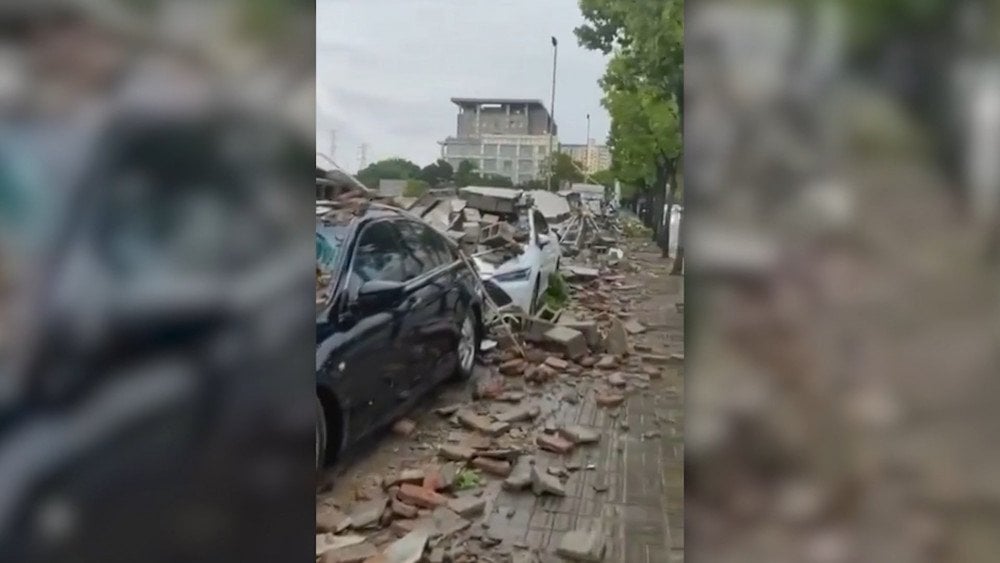
Typhoon Bebinca caused destruction in Shanghai, China
More than 414,000 people were evacuated. Airports canceled over 1,400 flights. Ferry and rail services were halted not only in Shanghai but also in neighboring provinces.
On September 17, the typhoon triggered over a dozen tornadoes in the provinces of Jiangsu and Shandong.
Two people died as a result of the disaster.
Typhoons rarely reach Shanghai, usually making landfall much farther south, making this event both unique and dangerous.
Tropical Hurricane Francine
Tropical Hurricane Francine slammed into the Louisiana coast in the USA on September 11 as a dangerous Category 2 storm. In Terrebonne Parish, wind speeds reached 160 km/h (99.4 mph).
Due to the heavy rainfall brought by the hurricane, 10 million people were at risk of flash flooding.
By the following morning, nearly 460,000 residents of Louisiana and Mississippi were left without power.

Hurricane-force winds ripped off roofs, USA
In the city of New Orleans and surrounding areas, more than a month’s worth of rain fell in just a few hours. In some areas, an astonishing 12.7 mm (0.5 inches) of rain fell in just nine minutes.
All flights at New Orleans airport were canceled. The weather station there recorded 186 mm (7.32 inches) of rainfall (the average monthly precipitation in September in New Orleans is 116.2 mm or 4.57 inches).
Hurricane Francine had two distinctive features: rapid intensification before landfall and a massive amount of rainfall it brought.
Potential Cyclone 8
The coast of North Carolina in the USA was flooded by historic rainfall.
On September 16, in Carolina Beach—a popular resort town—an unbelievable 457 mm (18 inches) of rain fell in just 12 hours.
Climatologists estimate that such an event occurs once every 1,000 years.

Unbelievable amounts of rain flooded Carolina Beach, USA
Other areas in the region recorded over 300 mm (11.8 inches) of rain, with wind gusts reaching 124 km/h (77 mph). Roads were submerged, with flood depths reaching 1 meter (3.28 feet).
Water trapped vehicles, rushed into homes, and led to numerous rescue operations.
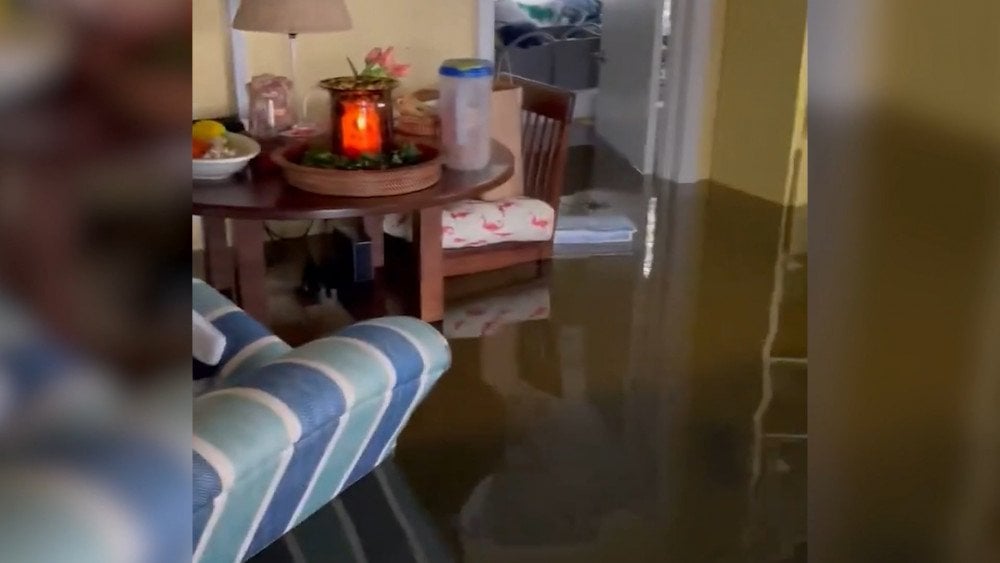
After heavy rains, water rushed into homes, USA
The town of Sunny Point picked up more than a month’s worth of rain when over 230 mm (9 inches) fell in just three hours.
Flooding also struck neighboring Brunswick County. On September 16, rainfall levels here exceeded 127 mm (5 inches) per hour.
Notably, this historic rainfall was caused by a weather system that, by climatologists’ standards, was too weak to be classified as a storm. It was named “Potential Tropical Cyclone 8.”
All of the events described in this article share one thing in common: extreme amounts of rainfall they brought across the planet.
It is already clear where these kilotons of water come from: record-warm oceans are evaporating more moisture, and the heated atmosphere can hold and suddenly dump all that water on land.
Since the cause of such extreme events is increased atmospheric humidity, the solution to the problem is obvious: excess moisture needs to be removed from the atmosphere. Technologies capable of doing this quickly and efficiently already exist. Information about them is available in the documentary “Water from Air: The Path to Saving Humanity.”
Using these technologies can save millions of lives.
You can watch the video version of this article here:
Leave a comment